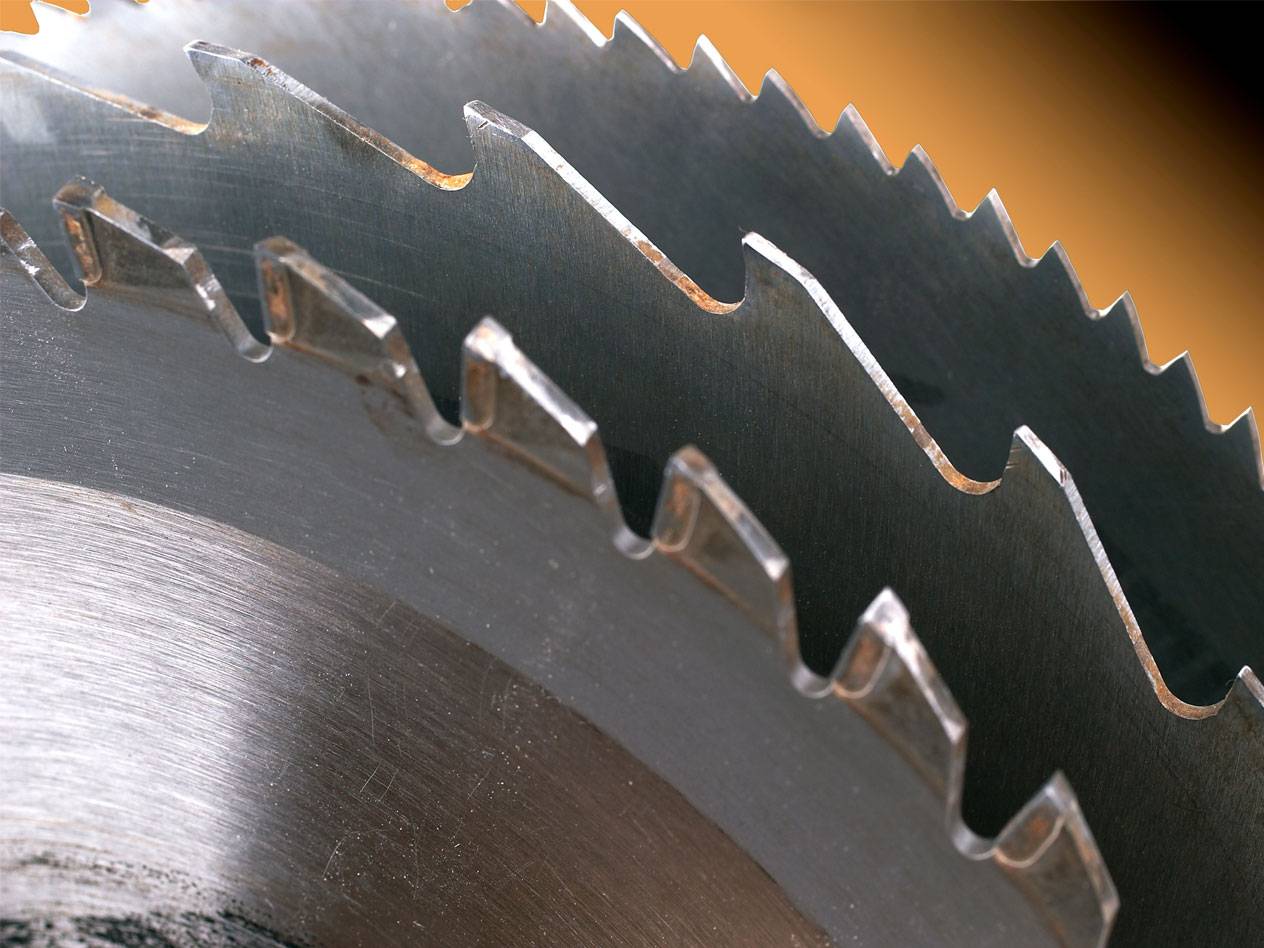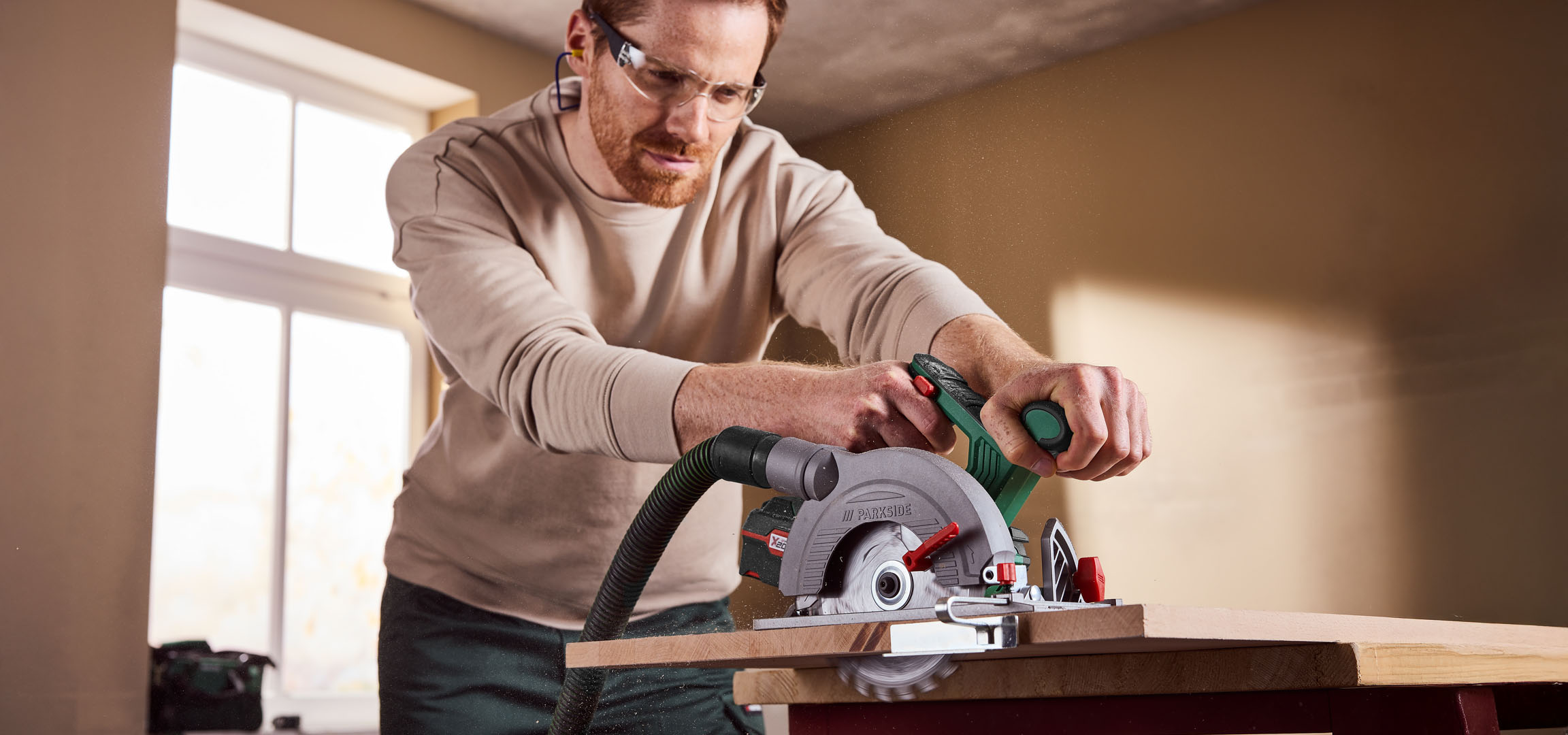Circular Saw Blade
A circular saw can reliably cut wood, metal, plastic, and even building materials like concrete or natural stone. The cutting work is performed by the circular saw blade. Since there are different types of circular saw blades, some basic knowledge is helpful. This guide reveals everything about the right circular saw blade.
What it a circular saw blade
A circular saw blade is a rotating cutting tool that is used in fretsaws or hand-held circular saws. Regardless of their specialization, all circular saw blades have some properties in common:
- Round basic shape
- Cutting teeth on the circumference
- Suitable for cutting various materials
However, the base material, the number of saw teeth and the intended use can vary.
Generally speaking, there are two types of circular saw blades that differ in terms of their manufacture and design:
- One-piece saw blades: punched out of a base material and fitted with the desired tooth shape
- Composite circular saw blades: made from a metal core onto which cutting edges (teeth) made from other materials are soldered
Short rip and cross cuts in hardwood and a high cutting quality in softwood are easily possible with one-piece circular saw blades. Composite circular saw blades, on the other hand, are better suited to hardwood and harder composite materials. This is due not least to their interlocked (alternately arranged) row of teeth, which is wider than the metal core of the blade and runs through hard materials with less friction.
There are a total of three tooth positions for circular saw blades:
- Negative
- Neutral
- Postive

It all depends on the position of the teeth
In the negative position, the cutting angle in the material is very flat, which is why a lot of feed force is required. This type is primarily intended for cutting hard metal such as stainless steel.
With a neutral tooth position, there is no rake angle to the center axis and the entire tooth edge is loaded. This also requires a high feed force, but the tooth edge is very robust when it hits the material. Circular saw blades with a neutral position are suitable for various metals and light metals.
The positive tooth position is typical for sawing in wood. The teeth literally bite into the material and thus already perform feed work independently. This puts a lot of strain on the tips in particular, which is why foreign objects such as nails or screws quickly damage the teeth.
Finding the right circular saw blade
Four properties play a key role in selecting the right circular saw blade. The number and type of teeth, the cutting width and the speed of the blade are also important.
Number of teeth
The more teeth a saw blade has, the finer the quality of the cut. Depending on the material to be cut, however, a high number of teeth is not generally recommended. Similar to the tooth position, there are also three categories here:
- low: up to 36 teeth, large chip gap, cutting performance is the focus, cutting quality is coarse and rough, cuts are best made lengthwise to the grain
- high: between 36 and 48 teeth, cross cuts achieve clean results, saw blades clog up quickly with longitudinal cuts
- very high: 60 or more teeth, very fine cutting quality, used for thin materials such as plywood, with slow cutting speed and higher feed rate
There should always be at least three teeth in the material when cutting to enable clean work. The blade diameter should therefore be selected depending on the workpiece and its size.

Finding the right circular saw blade
Four characteristics play a key role in selecting the right circular saw blade. The number and type of teeth, the cutting width and the speed of the blade are also important.
The type of teeth is decisive for the cutting quality and durability of the circular saw blade. The most common tooth shape is the rectangular flat tooth, which is ideal for longitudinal cuts in softwood and hardwood.
Interchangeable teeth have a bevelled back. They are often used as universal saw blades because they are suitable for both longitudinal and cross cuts.
Trapezoidal flat teeth are very robust and suitable for hard materials because they are particularly resistant to foreign bodies.
Cutting width
The cutting width depends on the thickness of the saw blade and its teeth. The thinner the circular saw blade, the lower the speed should be set. There is an increased risk of accidents if the speed is too high and overheating occurs.
Speed
The cutting speed - i.e. the speed at which the saw blade moves back and forth - should not exceed 100 meters per second. The larger the circular saw blade, the lower the speed should be set. The material being processed also determines how high the speed should be set: Non-ferrous metal (NF metal) and plastic can be cut at up to 5,000 revolutions per minute, wood at up to 9,000.
How is a circular saw blade changed?
Always fix the saw blade, disconnect the power supply and loosen the fixing screw. Then replace the blade and tighten the screw again. Special instructions can be found in the operating instructions for the respective device.
What to do if the hole in the blade is too large?
The standard size has a diameter of 30 mm. If a blade of this size does not fit on the saw, so-called reduction rings can be used. These reduce the size of the hole and make the circular saw blade compatible with the power tool.
How do you recognize blunt circular saw blades?
Signs of dullness are slower sawing speed, discoloration due to overheating at cutting edges, increased noise and vibrations. Vibrations must be responded to immediately, as they are a sign of an imbalance that can cause the circular saw blade to shatter. However, blunt saw blades do not have to be replaced immediately; they can be resharpened up to ten times.

